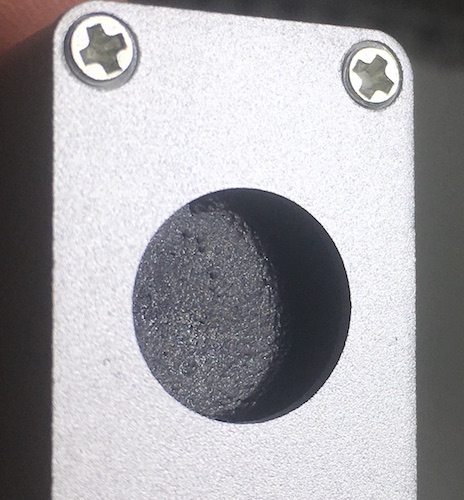here is a update to those who question on this lovely Pocket LPM:
coating after test:
No burning scar if you loose the focus firstly.
For those who believe, no proof is necessary. For those who don't believe, no proof is possible.
You can't make everyone like you, not to say your "competitors" (it's ridiculous to say LPS is the competitor of LPM producers).
Those who thought only they could make accurate LPM should wake up.
We know some people/company can make great LPMs, why they don't release it to the market, that's because of malicious comments, and those who just know knock the keyboard and comment.
The lucky thing is, LPS don't rely on LPF, here is not a sales channel of us. we just share interesting things here.
The laser is bright, but someone's heart is dark.
the end.
You call that a valid test... :thinking:
What.. no NIST Traceable Lighter this time....:thinking:
Where is all the proof of your upgraded V2...:thinking:
Again I will answer your Post in order....
1) I see blemishes on that Sensor surface. Not sure
if that is from a Laser or just a badly applied coating.
2) I understand that the Laser beam that you used
in this test were
Unfocussed to just fit in the 12.5mm
sensor window opening.
3) Where is the proof that both Lasers were tested
on a NIST Traceable LPM for the Powers you claim..:thinking:
It is easy to calibrate an LPM to show 1000mw when
only a 100mw Laser is applied.
4) There are many reputable Hobbyist LPM designers
and manufacturers that actually know what they are
doing... unfortunately you have proven that you are
not one of them...
As to item number 2) above let be explain what I see.
For the sake of this explanation... we will assume your
Lasers were 4.5W each and your LPM was calibrated
properly.
A laser beam unfocused to 12mm has a surface area
of ~113.1mm2.
You state that the new Max Power of your V2 LPM is
10 watts.
10 Watts / 113.1mm2 = ~88.42mW/mm2. That is a
Power Density of 88.42 X 100 =
8.8W/cm2.
For example our LaserBee AX3 sensor that we rate
at 5.2W at a 4mm diameter Laser Beam will have a
beam surface area of ~12.56mm2.
5.2 Watts / 12.56mm2 = 414.01mW/mm2 or a power
density of
41.40W/cm2.
It is to be noted that we down grade our actual Max
Power tests to supply a safety buffer if a customer
goes a bit over that max rating by mistake.
If we used the same non-logic testing technique as
you on our LaserBee AX3 sensor as you do... we
could also make a false claim of Max Power at
46W
for our LaserBee AX3...rather that the true
5.2W...
we claim. (414.01mW/mm2 X 113.1mm2 = ~46.82W)
Conclusion:
With your own video proof... you have proven that your
new LPM V2 has a Max Power Density of only 8.8W/cm2.
Jerry




